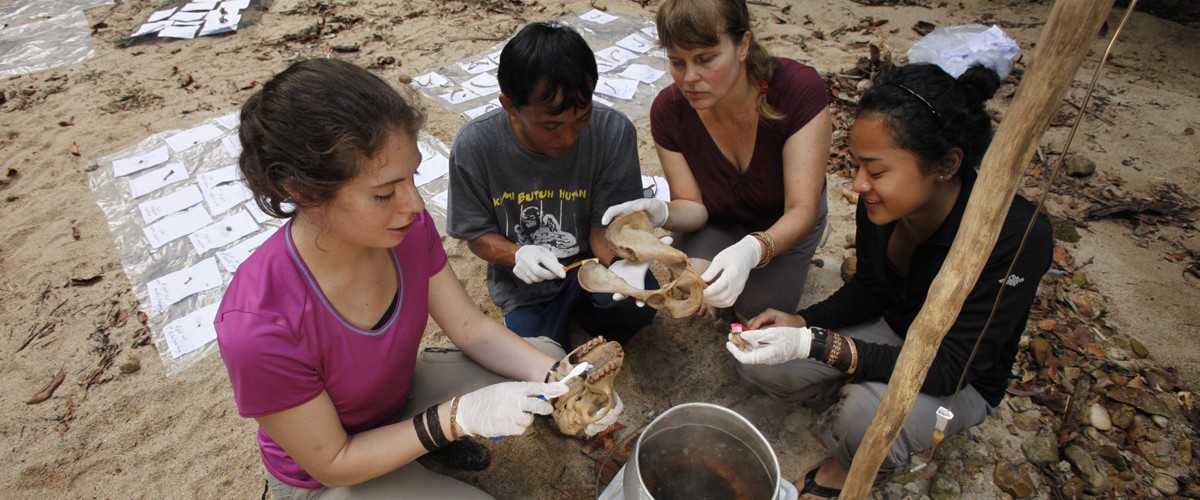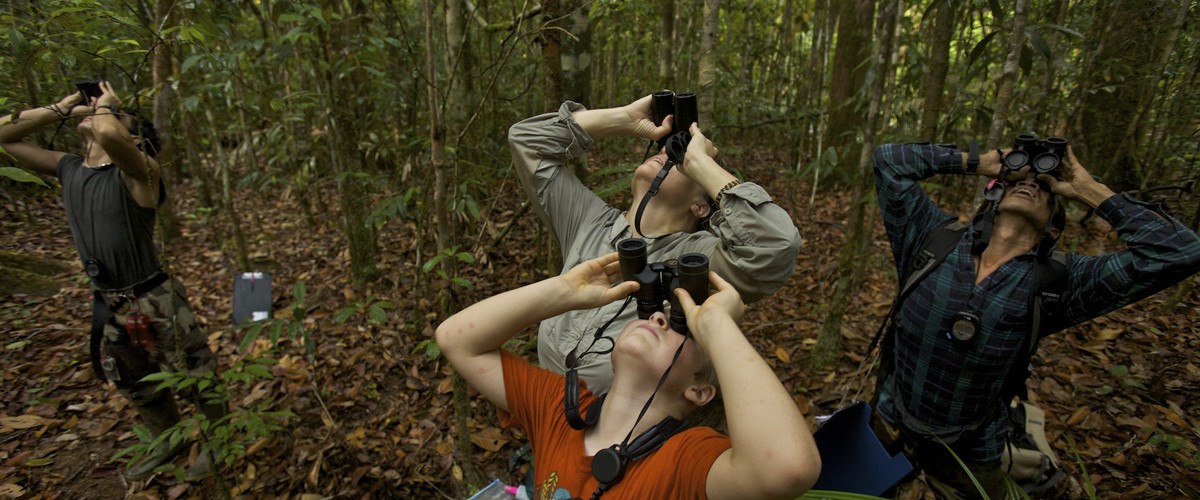Maybe some of you are familiar with Gunung Palung National Park (GPNP). It is located here in West Kalimantan, in the regencies of Ketapang and Kayong Utara. GPNP is one of the last primary rainforests in the world and is home to millions of plants and animals, including the critically endangered orangutan and various types of hornbill species. These key species attract many foreign and local researchers who are interested in the diversity of plants and animals. At Cabang Panti Research Station (CPRS) we have approximately 2,100 hectares of trail systems encompassing eight habitat types.
|
|
|
Rinta in Gunung Palung National Park collecing phenology data. Photo credit GPOCP.
|
Last year, I finished up my bachelor’s degree and wanted to learn more about orangutans so I volunteered to help the scientists at CPRS for one month. After my volunteer period, I was offered a position to join the Orangutan Research Team as a Botanical Assistant. I have been working here for almost one year and am responsible for a variety of tasks. I have leaned to search for and follow orangutans and to process the various types of samples collected, such as the fruits they eat, and the feces and urine they excrete. Recently, I have started learning to collect phenology data. A normal day of phenology starts around 8:30 in the morning. During this time, I will hike to selected areas of the forest and record the amount of young leaves, fruits, and the overall condition of certain trees. Once I finish collecting data, I will search for orangutans to follow. My days start a bit earlier, around 4:00 in the morning, when there is an orangutan to follow. These days I head out to the nest before the orangutan wakes up, collect urine, fecal, and food samples and return to camp to process the samples in the laboratory.
|
|
Rinta weighing and recording data on fruit samples eaten by an orangutan during one follow day.
Photo credit Faye Harwell. |
There are many methods used to process each of the samples. Part of our research involves looking at the parasites found in orangutan feces. While this is a smelly job, I still find it interesting because it relates to orangutan health. If they are sick, or have many parasites, they will not expend much energy, which ultimately affects the distribution of seeds they eat. I find it really interesting when I find a whole seed in the orangutan feces. Imagine how that benefits the regeneration of forests! One of my favorite parts of the job is following mother-infant pairs. I love to see their interactions, like when they share food. Oftentimes, I have seen a mother chew the food before giving it to the baby. This is probably because the teeth of juvenile orangutans are not yet strong enough to break down these fruits and seeds. Many of the fruits I have encountered have very hard shells and are difficult to open, especially fruits from the genusStrychnos and Diospyros.
|
|
|
Diospyros, an orangutan fruit, that has a very hard skin. Photo credit Rinta Islami.
|
Another behavior I enjoy watching is when juvenile orangutans start learning to be more independent. For instance, I have seen a young orangutan start to explore a tree a little further away from its mother, but then you hear something like a child crying because they have gotten too far away. But not to worry, mom is close by and comes back to soothe her adventurous youngster.
|
|
|
Bibi and Bayas, one of the mother-infant pairs seen at Cabang Panti. Photo credit Becky Curtis.
|
Apart from all kinds of research-related activities, daily life at CPRS is always exciting. Just imagine waking up every day, breathing the fresh forest air, hearing the river calmly going by, and the songs of various types of birds and animals singing their morning tunes. These parts of camp life I truly appreciate as it is very difficult to have these luxuries if living in the city. Despite living in the middle of the forest and being very far away from the hustle and bustle of urban life, we rarely feel lonely out here. We often play games and many of the assistants are quite creative. We have started making woven bracelets from non-timber forest products, such as rattan. It is our hobby in our down-time. It is my hope that I can continue to grow my knowledge of the research activities being carried out at the Cabang Panti Research Station. We must find a way to expand our research and benefit the community so they can also play a role in protecting and maintaining the biodiversity of Gunung Palung National Park.













